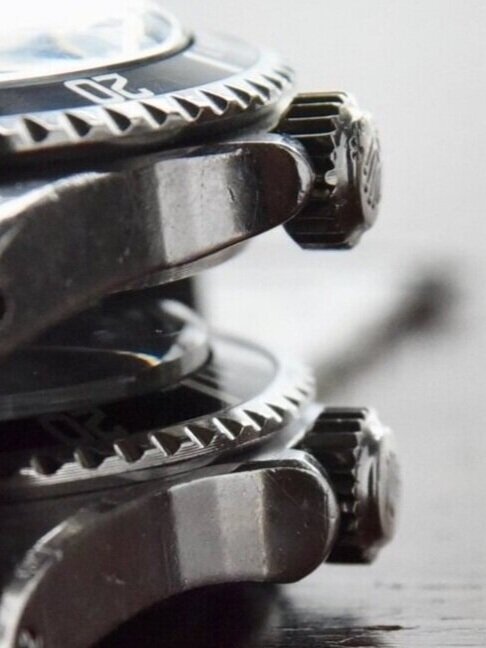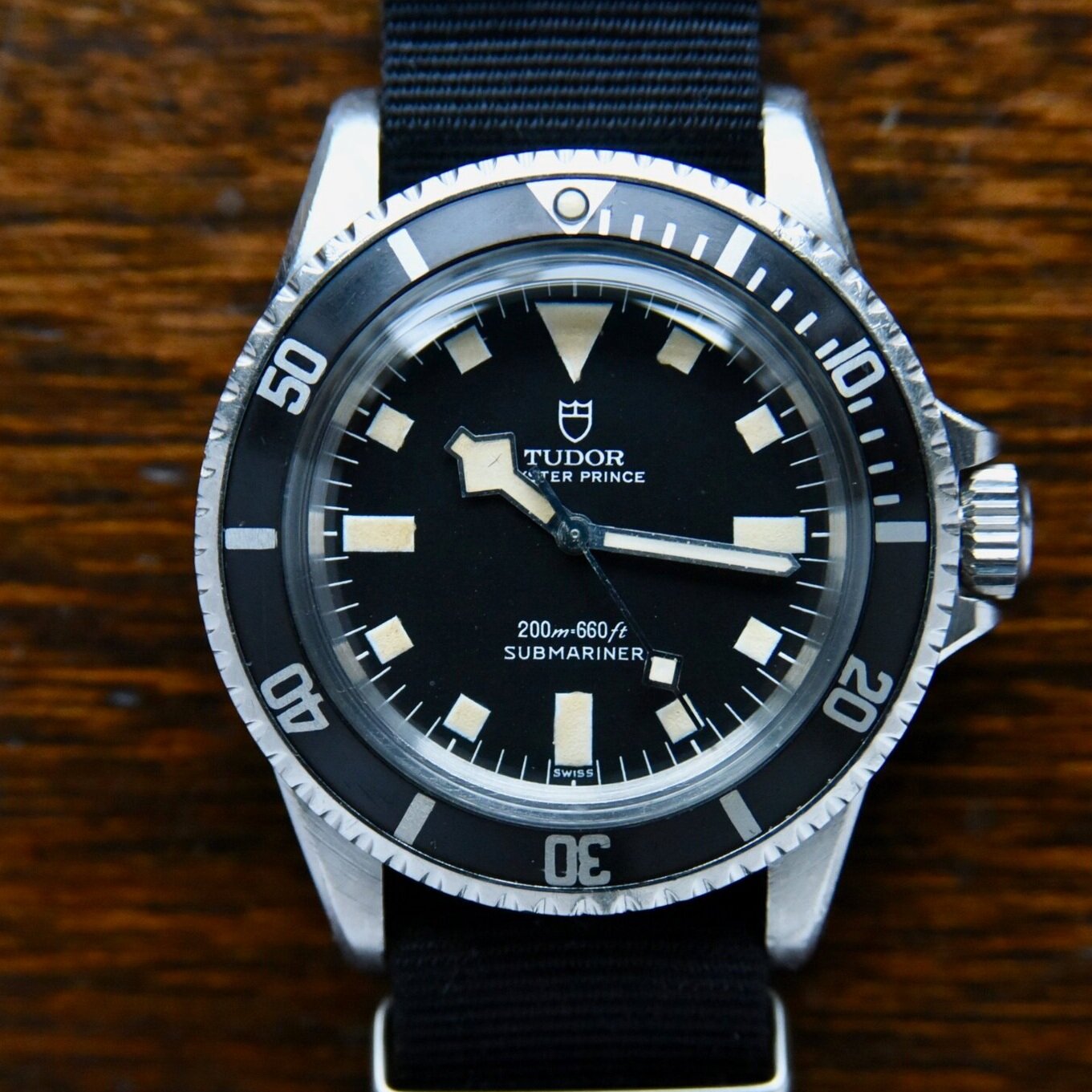7016/0 + 7021/0
Following the ref. 7928, Tudor launched their new generation of submariners: the ref. 7016/0 and 7021/0. Over seven years of production, we witnessed significant changes. These included the transition to an ETA movement, the addition of a date display (ref. 7021), and several new dial variations. The 7016/0 featured ETA cal. 2483, while the 7021/0 featured an ETA cal. 2484. Both were 25-jewel movements. In the very early years of the 7016/0, we see several dial variations being released almost simultaneously. On the other hand, the 7021/0 only had two dial variants in the entirety of its production.
Dial - The ref. 7016/0 featured three main dial types, each with its own subcategories: Rose, Shield, and the Snowflake. The Rose dial (same as ref. 7928 MK6) was the first variant of the 7016/0 and was produced in the first quarter of 1968.
The 7021 only had two dial types: the Snowflake, in blue and black. This is the first time we see a non-black submariner dial by Tudor and Rolex. The 7021/0 was fitted with a red and black date wheel known as a roulette wheel. The even numbers were in red text and the odds were in black. These can only be found in early examples.
The most common of all the dial variants is the Snowflake; a nickname given by collectors due to the shape of the hour hand. While common in the 7016/0, the Snowflake signified a new era for Tudor and set them on a path that diverged from the classic Rolex design. With the release of this unique and original design, Tudor would forge a new identity for themselves.
The Snowflake was strongly influenced by the French Navy--known among aficionados as the Marine Nationale (MN)--who preferred a watch that was easier to read when underwater. Tudor fashioned the square hour plots and large Snowflake hands for increased legibility in low light or murky conditions. Today, the Snowflake has become a signature trait of Tudor’s line of modern sports watches. The rarest of the Snowflake dial variants and one of the rarest Tudor submariners overall, is the 7016/0 blue. It is exceedingly difficult to source, especially in viable condition, as early examples of the Snowflake experienced rotting or bubbling. This was a result of a defect in the paint and/or water ingress.

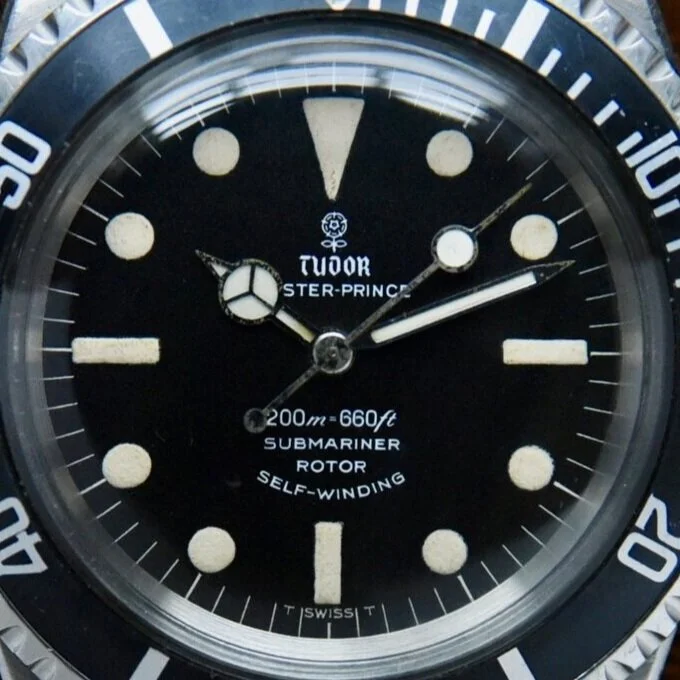
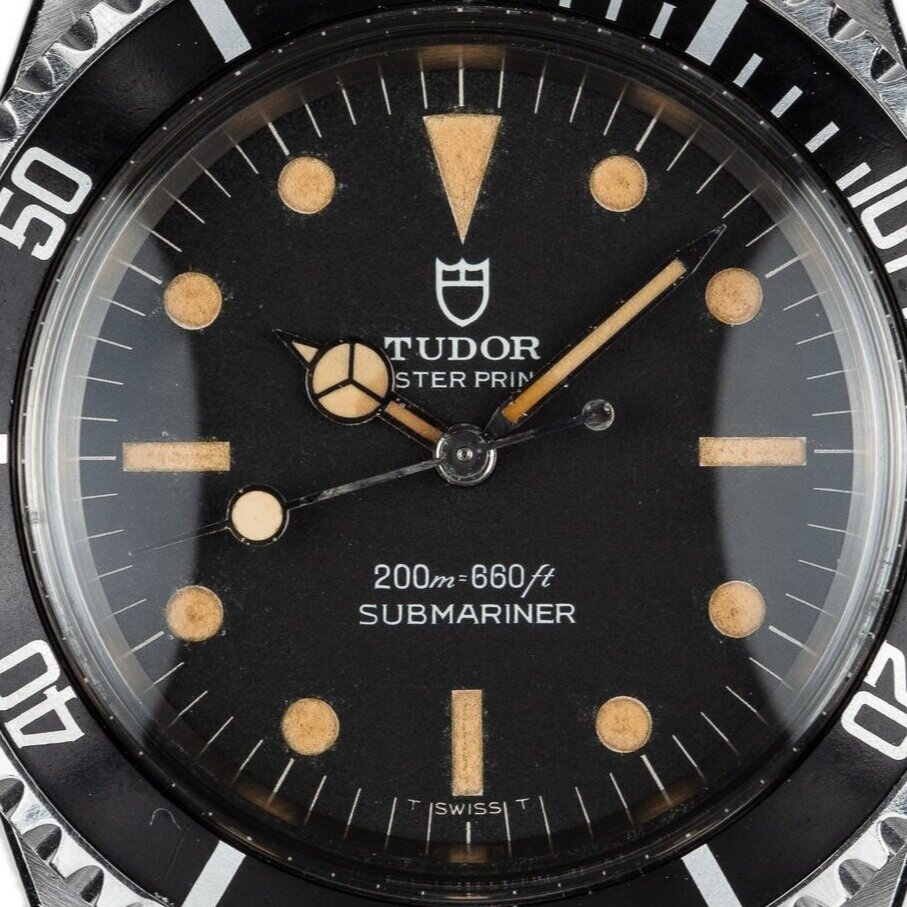
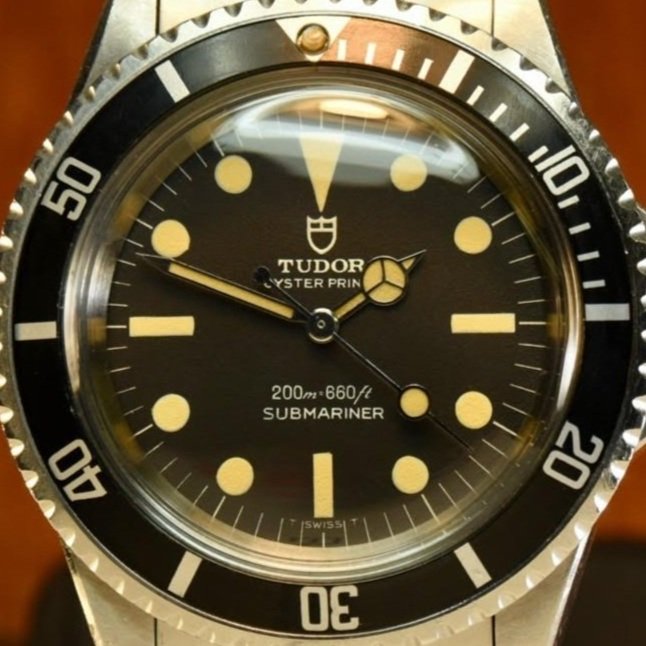
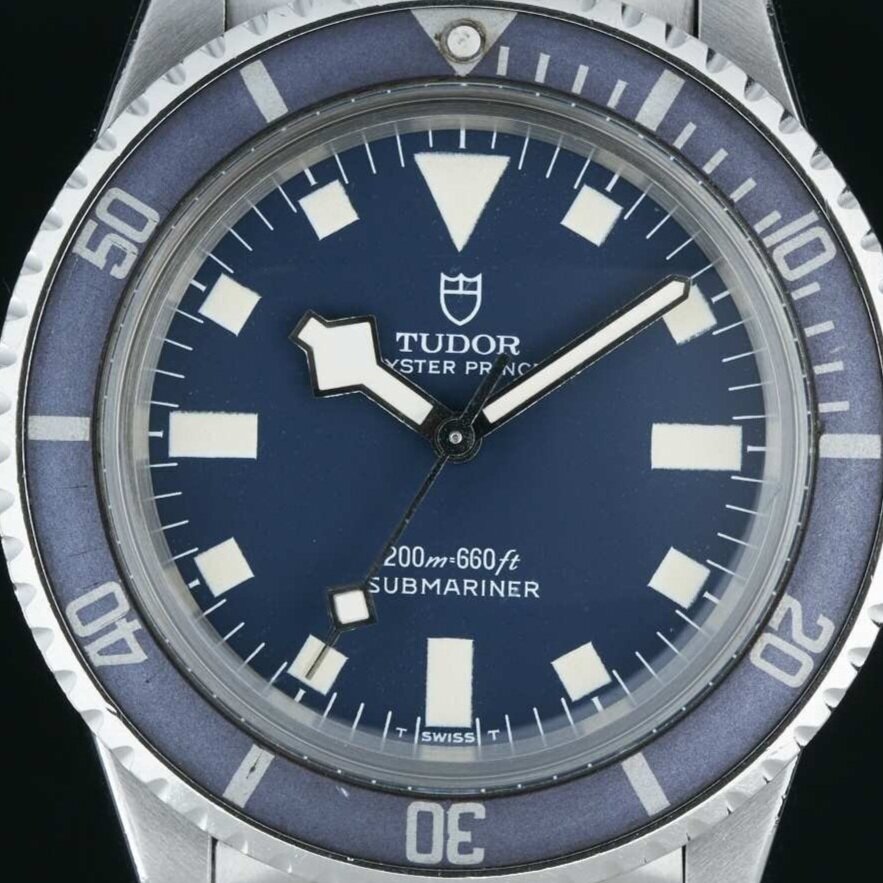
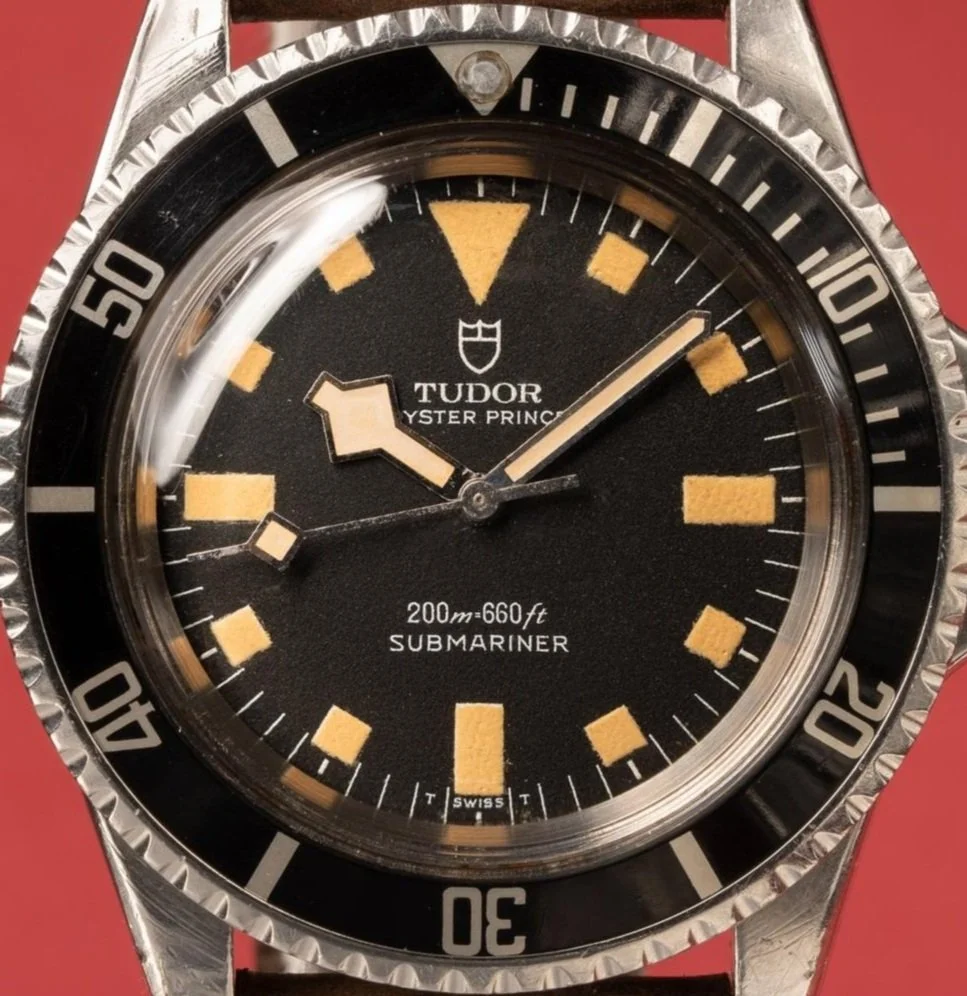
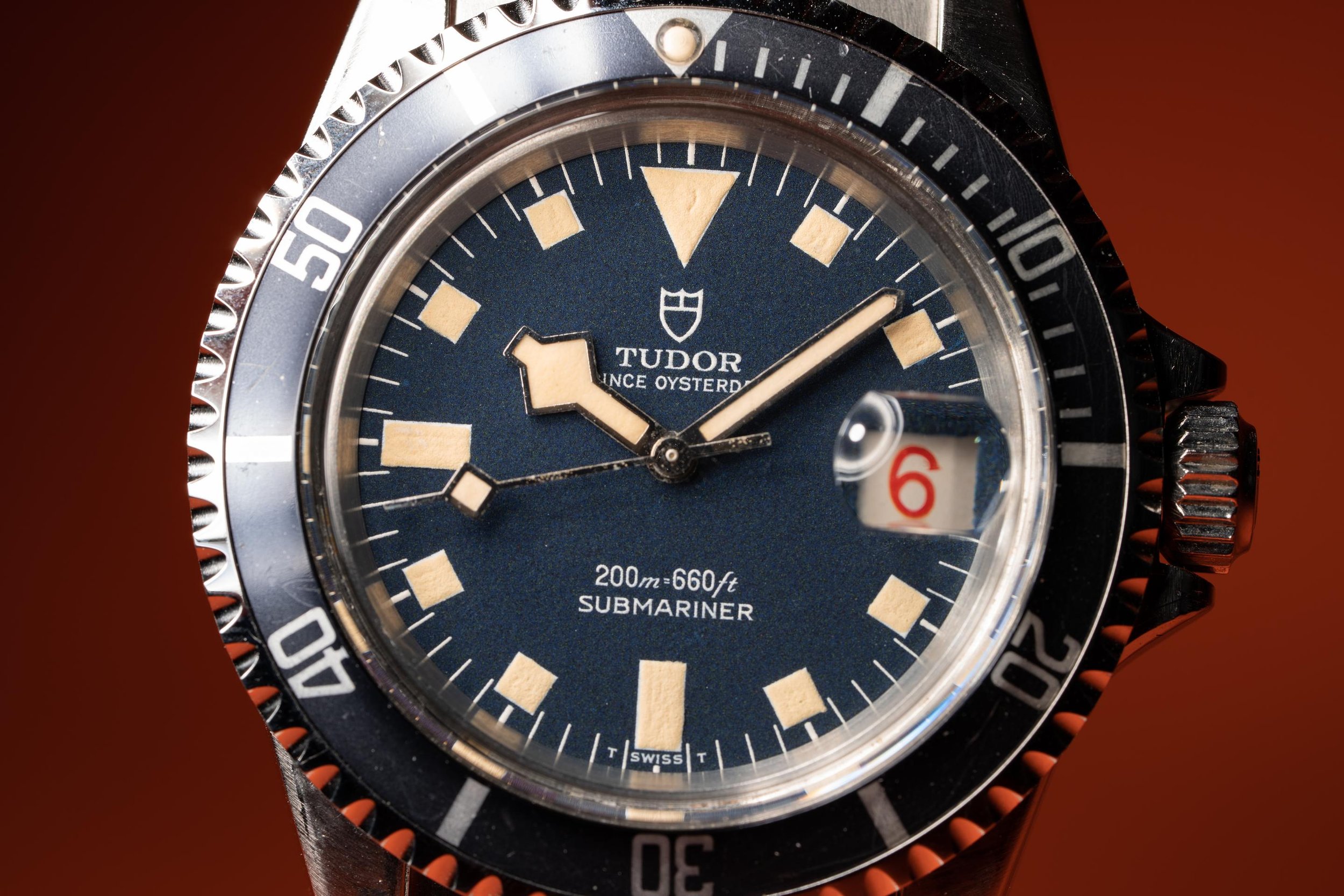
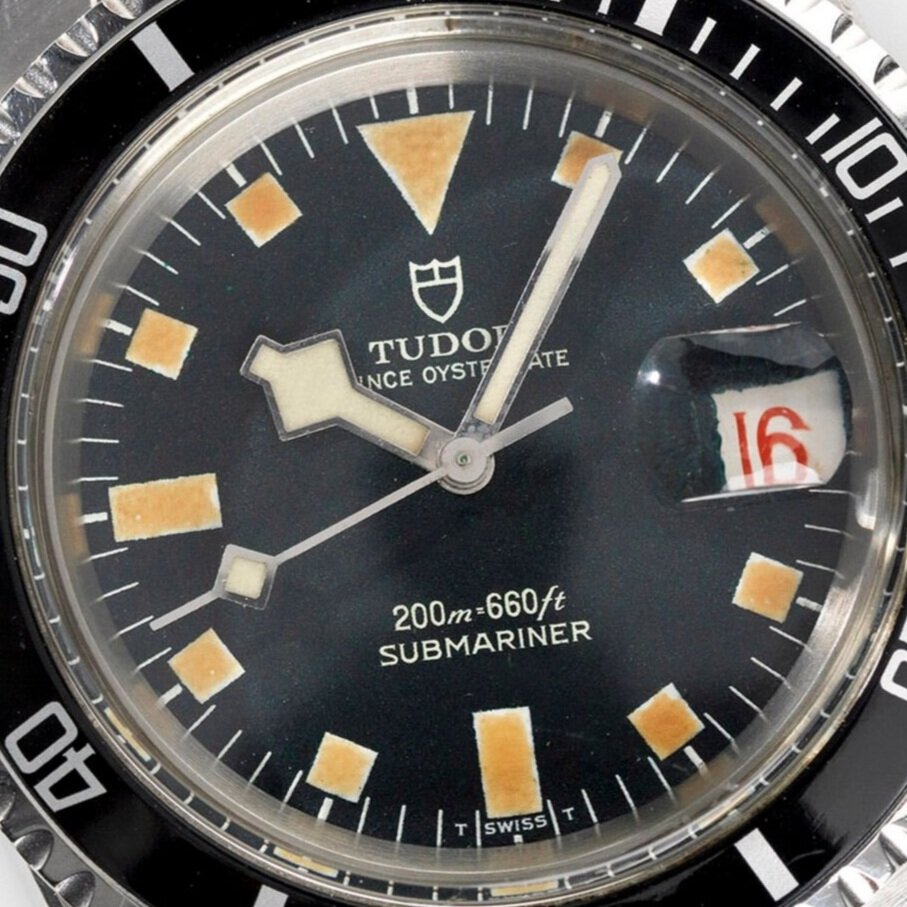
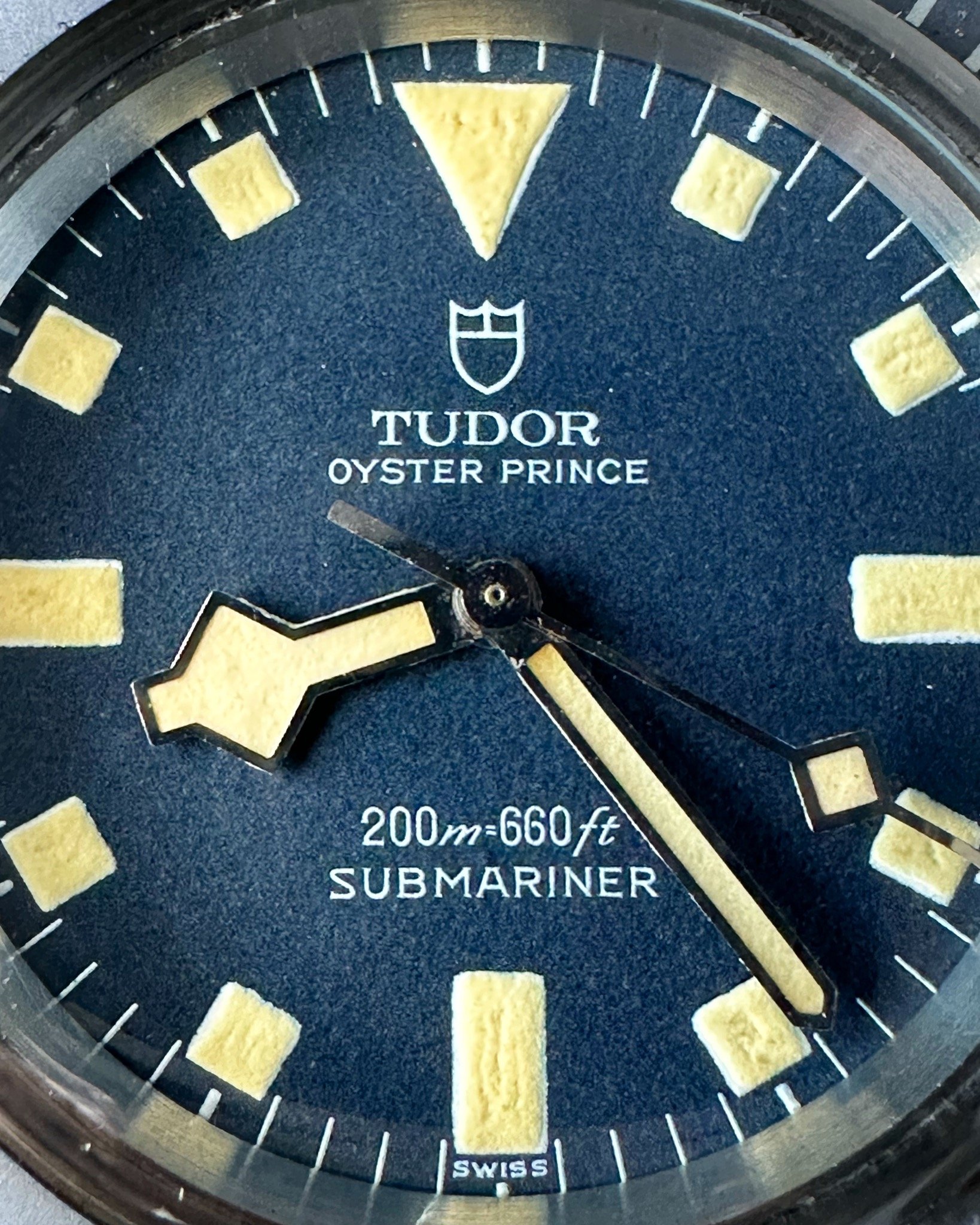
Case - As with the previous generation, Tudor maintained a 39 mm case (signed Rolex) that was waterproof to a depth of 200 meters. Tudor also continued with rounded crown guards, except on the first 7016/0s found in the first quarter of 1968. Here we see the introduction of an interesting case shape known as semi-pointed crown guards (SPCG). The SPCG cases were in production for a very brief time before moving back to the rounded crown guard, which remained in production for the life of the reference, and for all future references, as well.
As a point of comparison, the SPCG case features an upwards slope from the underside. We also see the addition of “/0” at the end of the reference number which represents a stainless steel case. Lastly, around 1973 (approx. serial 814xxx) we see the date omitted from inside the caseback. “Montres Tudor S.A., Geneva Switzerland Patented, Stainless Steel,” would be the lone inscription inside the caseback.
Pictured in the top right is the Semi Pointed Crown Guard (top) and the Rounded Crown Guard (bottom).
Hands - All examples found in the 7016/0 use the traditional mercedes hands except for those found on the Snowflake models. The only variation found within the mercedes hands is on the Maxi variants, which has a shorter minute and seconds hand that barely touches the minute markers. As with the ref. 7928, we also find the “lollipop” seconds hand in this reference which tends to coincide with very early 7016/0s only. Subsequently, the small seconds hand is consistency seen throughout the production period.
Please note that the provided serial ranges below are estimates and are not definitive
Rose
The first iteration of the 7016/0 shared the same rose dial as the ref. 7928 MK6. The 7016/0 version was fitted in a semi-pointed crown guard (SPCG) case. We only find SPCG’s on very early 7016/0s.
The earliest example found is 621xxx. All Rose examples should have “I 68” and “7528” stamped inside the case back. There is some speculation as to why 7528 was stamped inside the caseback. One can assume 7528 was going to be the named reference going forward and then Tudor decided to use 7016/0 instead to align with the rest of the shield dials in their non-submariner line up (ref. 7017, 7019, 7020, 7021).
Approx. serial range: 621xxx to 623xxx
Maxi Rose
This dial has the same characteristic as the Rose dial featured above but with larger hour plots. There is also a notable difference in the hands on these Maxi versions. The hour and seconds hands only reach the hash marks, whereas the hands on non-Maxi versions extend beyond them. Additionally, lollipop seconds hands are commonly present in this variant.
This is the last time we see Tudor use the Rose dial until modern examples.
Approx. serial range: Most examples are found around the 623xxx to 625xxx range, but several have surfaced up to 737xxx.
Snowflake “SWISS” Only
The first Snowflakes are what collectors refer to as “SWISS only,” due to “SWISS” being the lone print in between the hash marks. “SWISS only” can be found with black and on much rarer occasions, blue dials. The blue dials were first released in 1968 (~62xxxx), followed by black.
Approx. serial range: Black dials tend to fall from 74xxxx to 78xxxx, while blue dials are found around 62xxxx.
Shield
This dial variation is only found around 1970.
Approx. serial range: 740xxx
Maxi Shield
This dial has the same characteristic as the Shield dial featured above but with larger hour plots and a shorter hour and seconds hand.
Note that this variation is typically paired with a shorter minute and seconds hand, that barely touches the minute markers.
Approx. serial range: 740xxx
Snowflake
The rest of the Snowflakes with “T SWISS T” can be found in either blue or black. They feature a “T SWISS T” dial and can be found until the end of the production of the 7016/0.
Approx. serial range: 760xxx to 827xxx
7021/0
In IV 1969, Tudor released the ref. 7021/0, their first submariner to feature a date function. The 7021/0 had both blue and black dials and was only configured with the Snowflake dial. Earlier examples were fitted with a red and black numeral date wheel known as a roulette wheel. The even numbers were red and the odd black. Later examples featured all black numerals. Some examples of the blue 7021/0 are known to have a “Confetti” dial indicating the presence of green and blue specs. "T SWISS T” is always featured below the 6 o’clock marker.
Approx. serial range: 70xxxx to 76xxxx
